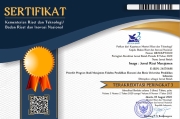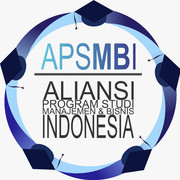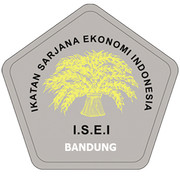Optimizing the Recruitment and Selection Process for Contract-based Civil Servant among Existing Non-Permanent Staff
Abstract
This study aimed to optimize the recruitment and selection process for Government Employees with Work Contracts (PPPK) from existing honorary workers in Pagar Alam City Government. The policy to eliminate honorary workers, scheduled for completion by December 2024, has accelerated the transition of honorary workers to PPPK status through the recruitment process. However, the implementation of this policy faces various challenges, including a lack of detailed regulations, misalignment between administrative requirements and job needs, and uncertainties in the implementation timeline. Employing a descriptive qualitative approach, supplemented by a quantitative questionnaire, this research analyzed the person-job fit. The findings suggest that optimization can be achieved through the administrative selection stage by providing flexibility in assessing work experience and offering video tutorial-guided registration assistance. Furthermore, to ensure the quality of recruited PPPKs, an Additional Technical Competency Test (SKTT) is recommended to assess candidates' substantial competencies beyond basic qualifications. This research contributes significantly to improving the PPPK recruitment process, particularly for local governments undergoing the transformation of honorary workers. The recommendations produced can serve as a reference in developing more effective and efficient recruitment policies and procedures.
Keywords
Full Text:
PDFReferences
Abbasi, S. G., Tahir, M. S., Abbas, M., & Shabbir, M. S. (2022). Examining the Relationship Between Recruitment & Selection Practices and Business Growth: An Exploratory Study. Journal of Public Affairs, 22(2), e2438. https://doi.org/https://doi.org/10.1002/pa.2438
Aggarwal, R., Lee, M. J., & Midha, V. (2022). Differential Impact of Content in Online Communication on Heterogeneous Candidates: A Field Study in Technical Recruitment. Information Systems Research, 34(2), 609–628. https://doi.org/10.1287/isre.2022.1120
Alam, G. M., Kader, R., Bashir, K., Rahman, M. M., & Aziz, N. A. B. A. (2024). Does the Civil Service Commission in Bangladesh Map Skills to Align Education, Recruitment Testing, and Training? Public Money & Management, 1–10. https://doi.org/10.1080/09540962.2024.2431010
Armstrong, M. (2006). Strategic Human Resource Management: a Guide to Action. Kogan Page.
Bangun, W. (2012). Manajemen Sumber Daya Manusia. Penerbit Erlangga.
Belli, S. S., & Bursens, P. (2023). The Revolving Door in Brussels: a Process-Oriented Approach to Employee Recruitment by Interest Organisations. Journal of European Public Policy, 30(1), 128–149. https://doi.org/10.1080/13501763.2021.1993312
Ben-Gal, H. C., Forma, I. A., & Singer, G. (2022). A Flexible Employee Recruitment and Compensation Model: A Bi-Level Optimization Approach. Computers & Industrial Engineering, 165, 107916. https://doi.org/10.1016/j.cie.2021.107916
Cachón-Rodríguez, G., Blanco-González, A., Prado-Román, C., & Del-Castillo-Feito, C. (2022). How Sustainable Human Resources Management Helps in the Evaluation and Planning of Employee Loyalty and Retention: Can Social Capital Make a Difference? Evaluation and Program Planning, 95, 102171. https://doi.org/10.1016/j.evalprogplan.2022.102171
Callaway, F., van Opheusden, B., Gul, S., Das, P., Krueger, P. M., Griffiths, T. L., & Lieder, F. (2022). Rational Use of Cognitive Resources in Human Planning. Nature Human Behaviour, 6(8), 1112–1125. https://doi.org/10.1038/s41562-022-01332-8
Creswell, J. W., & Creswell, J. D. (2017). Research Design: Qualitative, Quantitative, and Mixed Methods Approaches. Sage publications.
Garai-Fodor, M., Vasa, L., & Jäckel, K. (2023). Characteristics of Segments According to the Preference System For Job Selection, Opportunities For Effective Incentives in Each Employee Group. Decision Making: Applications in Management and Engineering, 6(2 SE-Regular articles), 557–580. https://doi.org/10.31181/dmame622023761
Hirst, G., Curtis, S., Nielsen, I., Smyth, R., Newman, A., & Xiao, N. (2023). Refugee Recruitment and Workplace Integration: An Opportunity for Human Resource Management Scholarship and Impact. Human Resource Management Journal, 33(4), 783–805. https://doi.org/10.1111/1748-8583.12349
Kawiana, I. G. P. (2020). Manajemen sumber daya Manusia (MSDM) Perusahaan. UNHI Press.
Keppeler, F., & Papenfuß, U. (2021). Employer Branding and Recruitment: Social Media Field Experiments Targeting Future Public Employees. Public Administration Review, 81(4), 763–775. https://doi.org/10.1111/puar.13324
Kristof‐Brown, A. L., Zimmerman, R. D., & Johnson, E. C. (2005). Consequences of Individuals’Fit at Work: A Meta‐Analysis of Person–Job, Person–Organization, Person–Group, and Person–Supervisor Fit. Personnel Psychology, 58(2), 281–342. https://doi.org/10.1111/j.1744-6570.2005.00672.x
Lauver, K. J., & Kristof-Brown, A. (2001). Distinguishing Between Employees’ Perceptions of Person–Job and Person–Organization Fit. Journal of Vocational Behavior, 59(3), 454–470. https://doi.org/10.1006/jvbe.2001.1807
Martins, J. M., Shah, S. S. H., Abreu, A., Sattar, S., & Naseem, S. (2023). The Impact of System Dynamic Employee Recruitment Process on Organizational Effectiveness. International Journal of Innovative Research and Scientific Studies, 6(3), 682–693. https://doi.org/10.53894/ijirss.v6i3.1793
Panggabean, R. J., Ahman, E., Disman, D., & Rofaida, R. (2023). Analisis Kompetensi dan Budaya Kerja terhadap Kinerja Di Era Reformasi 4.0. Image : Jurnal Riset Manajemen, 11(1), 69–78. https://doi.org/10.17509/image.2023.007
Pshdar, A. H., Baban, J. O., Bayar, G., Sarhang, S., Hassan, M. A., Shahla, A. A., Sabir, B. Y., Nechirwan, B. I., Ali, B. J., & Anwar, G. (2021). Recruitment and selection: The relationship between recruitment and selection with organizational performance.
Pynes, J. E. (2013). Human Resources Management for Public and Nonprofit Organizations: A Strategic Approach, 4th Edition. Jossey-Bass.
Rahman, M., Aydin, E., Haffar, M., & Nwagbara, U. (2022). The Role of Social Media in e-Recruitment Process: Empirical Evidence From Developing Countries in Social Network Theory. Journal of Enterprise Information Management, 35(6), 1697–1718. https://doi.org/10.1108/JEIM-12-2019-0382
Sievert, M., Vogel, D., & Feeney, M. K. (2022). Formalization and Administrative Burden as Obstacles to Employee Recruitment: Consequences for the Public Sector. Review of Public Personnel Administration, 42(1), 3–30. https://doi.org/10.1177/0734371X20932997
Sugiyono. (2015). Metode penelitian kombinasi (mixed methods). In Bandung: Alfabeta (Vol. 28, Issue 1).
Sugiyono. (2018). Metode Penelitian Kuantitatif. CV Alfabeta.
Tim CNN Indonesia. (2023). Jokowi Hapus Honorer 2024, Kemenpan RB Ungkap Syarat Jadi PPPK. In CNN Indonesia.
Verma, P., Kumar, V., Mittal, A., Gupta, P., & Hsu, S. C. (2022). Addressing Strategic Human Resource Management Practices for TQM: the Case of an Indian Tire Manufacturing Company. The TQM Journal, 34(1), 29–69. https://doi.org/10.1108/TQM-02-2021-0037
Waheed, D.-E.-N., Bolio, A., Guillaume, D., Sidibe, A., Morgan, C., Karafillakis, E., Holloway, M., Van Damme, P., Limaye, R., & Vorsters, A. (2023). Planning, implementation, and sustaining high coverage of human papillomavirus (HPV) vaccination programs: What works in the context of low-resource countries? Frontiers in Public Health, 11. https://doi.org/10.3389/fpubh.2023.1112981
Zhang, H., Zhu, W., Xiao, J., & Liang, H. (2024). Application of a Maximum Classification Consensus Approach For Construction of a Group Ordinal Classification of Applicants in Employee Recruitment. Journal of the Operational Research Society, 75(4), 742–765. https://doi.org/10.1080/01605682.2023.2207596
DOI: https://doi.org/10.17509/image/2024.030
Refbacks
- There are currently no refbacks.
Copyright (c) 2024 M. Multazam All Mukarom, Ely Sufianti, Hafid Aditya Pradesa, Muhamad Nur Afandi, Abdul Rahman

This work is licensed under a Creative Commons Attribution-ShareAlike 4.0 International License.
Image : Jurnal Riset Manajemen is licensed under a Creative Commons Attribution-ShareAlike 4.0 International License
View My Stats



